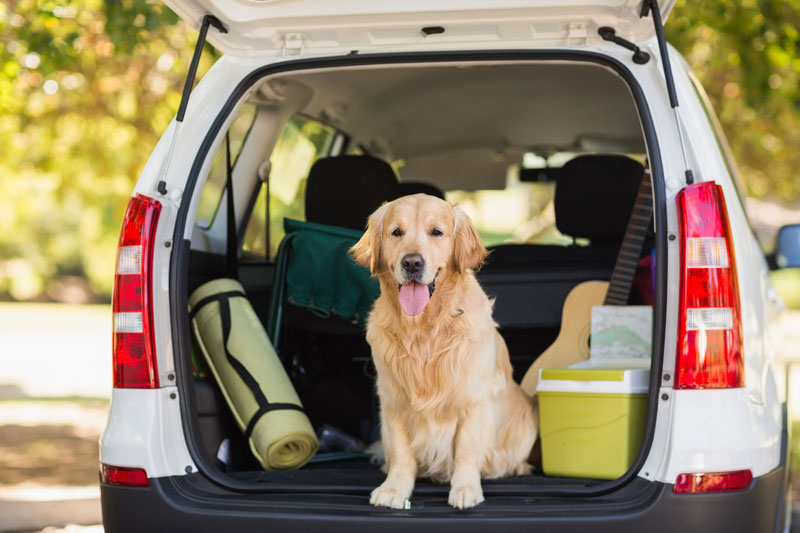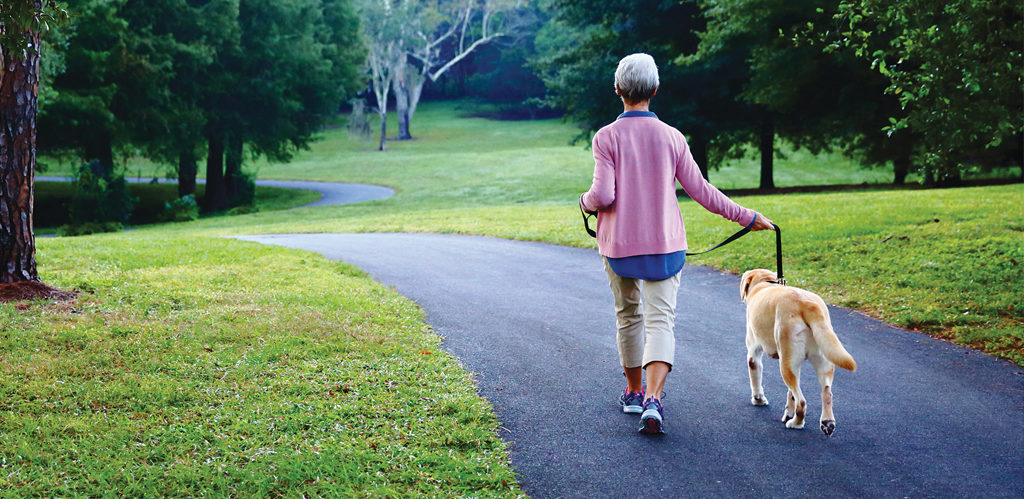It’s fantastic to be able to bring your cherished pet companions along. You have more resources to devote with your animal buddies. When bringing your dogs on automobile journeys, however, use caution. For your next automobile travel with your dog, take a look at these safety guidelines. (petprice, 2021)

1. Check to see whether your dog can perform a ’emergency brake.’
While your dog must always be kept on a leash when near a road, it’s a good way to learn them an evacuation command, such as’stop,’ so that you can want them to come to a complete stop in an emergency. Begin by learning this order in a peaceful place away from any threats, such as around the house. This will enable your dog to fully understand the command before exercising in more distracted conditions, such as crowded areas, where you will educate your dog to listen.
2. Travel Kit is Paramount
Make sure your pet has a travel kit. Include your pet’s medical documents, as well as confirmation of current vaccines. Bring normal food, water, meds, and bowls for your dogs. You should also pack any cleaning equipment you’ll need, such as trash bags and a scoop. Pack a few toys, perhaps some new ones for curiosity and a few old favorites, to keep your pet comfortable and amused during the journey. Finally, remember to include a pet first-aid kit. For all types of readily made travel kits, funfuzzy is the most suitable platform. (funfuzzy, 2022)
3. Microchip Usage for Identification Purposes
Determine the species of your pet. Although your pet should be microchipped, make sure they are also wearing a collar with an ID tag that has your home address and phone number. Get a permanent tag with the phone number of the place where you’ll be staying for longer travels and vacations in case your pet gets lost while you’re gone. All collars should be flat, and choke collars should never be used on your dog.
4. Never leave your dog alone
In a parked automobile, never leave your dog alone. When the temperature is over 70°F and below 35°F, it is a safety risk. Passers-by, on the other hand, may opt to smash your glass in order to release your dog if they believe they are imprisoned indoors at any temperature.
5. Safety Comes First
During the journey, keep your pet tethered. If your dog is bouncing around in the car when you’re driving, it’s not good for you or your dog. You must concentrate on driving, and if your dog becomes excited or terrified, they may interrupt you. Airbags are fantastic for you, but if you have a mishap with your pet in the front seat, they can harm them. As a result, dogs should ride in the back of the car. Traveling with your pet in a carrier that has been secured to the seat with a seatbelt or other anchoring is the safest option. You may also use a pet seatbelt, but they have not been shown to keep animals safe in the event of a car accident. Dogs need blankets in the summer for warmth, comfort, and security, so having dog blanket and dog mat on reserve is always a great thing.

Why Is Slow Feeding for Dogs a Good Idea?
It’s not only a behavioral feature that your dog eats so rapidly. Gastric displacement and volvulus (GDV), often known as bloat in dogs, is a deadly condition that causes the stomach to twist and deposit gas. If you notice any of the following behaviors in your dog: a large belly, dry heaving, agonizing sounds, or excessive drooling and panting, take him to the doctor immediately soon. Dogs with slow feeder bowls are less likely to get bloated or have other digestive issues. A slow feeder differs from a traditional open bowl in several ways, including higher centers and ridges.
Many slow feeder bowls come in a variety of thicknesses, and if your dog is often intimidated by obstructions, one of the lower bowls could be worth a try. Dogs with a brave disposition can manage more difficult terrain.
1. Needs to get rid about the Need to Vomit:
Slow-feeder dog dishes assist most dogs avoid vomiting by allowing them to eat smaller amounts of food at a time. As a result, the meal may be absorbed more easily.
2. Prevents Choking in Your Dog:
Choking may be avoided by feeding your dog slowly and in smaller portions, just as vomiting can be avoided. Dogs eat a lot and eat rapidly, especially when they’re hungry, which can lead to choking and vomiting.
Tips for Winter Hiking With Your Dog
Wolves are the ancestors of dogs, and wolves are associated with snow. Without the need of a background of quiet winter white, it’s difficult to conceive Canis lupus hunting prey. While some domestic canines share many characteristics with the big timberwolf, others are less well-suited to weather conditions. (funfuzzy, 2022) A Bichon Frise is unlikely to like being dropped out of its opulent leather handbag into a mound of fluffy snow. List of items and safeties necessary for winter travelling and hiking dog is presented as follows:-
- Keep an eye on those Claws. Dog boot soles come in a wide range of sturdiness.
- Prepare a backup plan.
- Purchase a Go-To Dog Jacket.
- Focus on choosing treats…. Bring an inflatable pad, bed, or blanket with you.
- Ignore Mountaineers and Snowboarders by teaching your dog to disregard them.
- Ponds, Rivers, and Volcanic Terrain should all be avoided.
Hiking on snow or ice may appear unaffected at first, but it’s advisable to pack anything to place on the dog’s paws if they begin to exhibit indications of pain. Long-term contact to cold surfaces (or de-icing salts) can damage your dog’s paw pads, causing splitting, blistering, and even hypothermia. Puppy shoes are a straightforward solution. Your dog may walk strange at first, but as soon as something a little more fascinating catches their attention, they’ll forget they’re wearing them. If boots aren’t your dog’s thing, or if you’re having trouble keeping them on his or her feet, try Musher’s Secret Wax instead.
